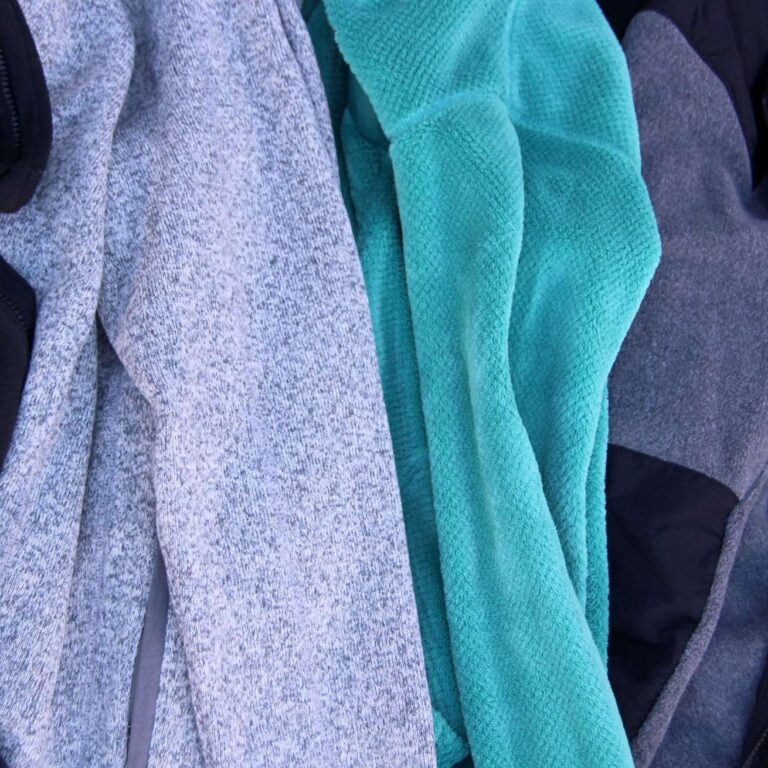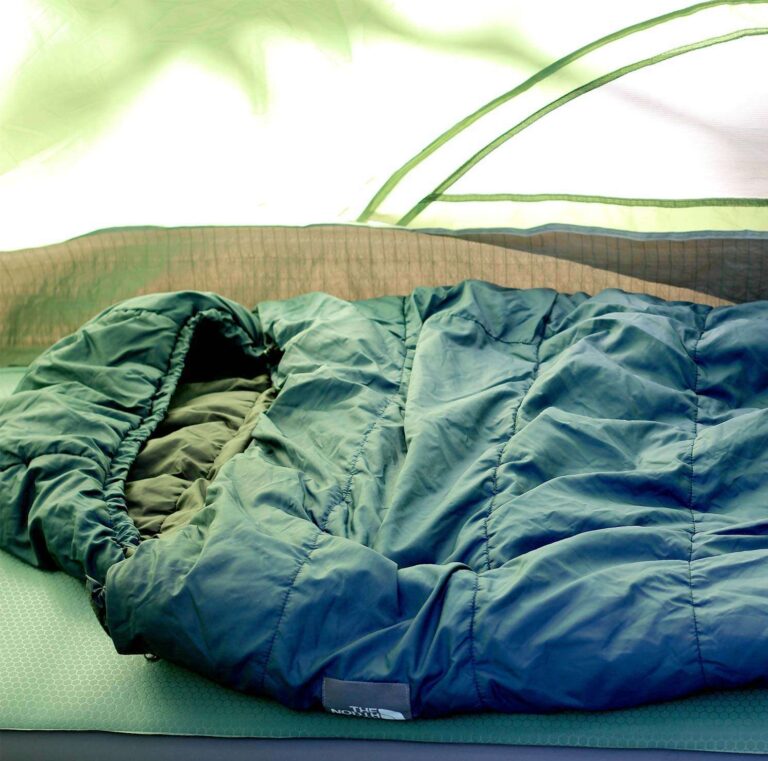Down jackets can be seen in nature, operating stealthily for thousands of years. The bright fabrics, slim baffles, and synthetic outer materials may be absent, but the key component to this revolution in cold weather protection — the down — is constantly swimming, honking, and pooping its merry life away.
Rather, it’s the geese and ducks that are performing those activities, often in frigid temps, and it is the down keeping them warm.

Down is like so many of nature’s gifts — sort of unbelievable in its specific application and complete perfection at performing a specific job. Evolution took its course with down, and through the transitive properties of our animal friends, we are benefitting from it.
This Outdoor Guide will focus on answering the mysterious questions we all have about down jackets: What are down feathers, really? What's hydrophobic down? Are lightweight down jackets packable down jackets? Should you pull down feathers out of your coat? You'll find all these topics (and more) below:
- How Down Feathers Work
- What Makes a Lightweight Down Jacket
- Outer Material
- Down and Animal Rights
- Backpacker Types
Before we get into all that, though, a harrowing tale.
History and Creation of Down Jackets
Necessity is the mother of invention, right? Actually, survival is the mother of invention, because survival is always what’s necessary, and what has driven humanity to such far-flung heights.
The Aha Moment for down jackets in modern society came through one of the great outdoor clothing pioneers, Eddie Bauer, and his hypothermic hike, now the stuff of legends. He wasn’t the first explorer to get too cold; he wasn’t the first to try to get warmer; he wasn’t the first to survive and get to work on a solution.
However, he was the first recorded individual to stuff goose down feathers in an otherwise empty shell, sew up a bunch of diamonds to keep the down in place, and sell it to people. Yes, Bauer is the godfather of the modern down jacket, and he has the patents to prove it. The military loved his first model so much they asked him to engineer one for pilots, and the B-9 jacket was born. (Looking cool and stayin’ warm is a thing, people.)
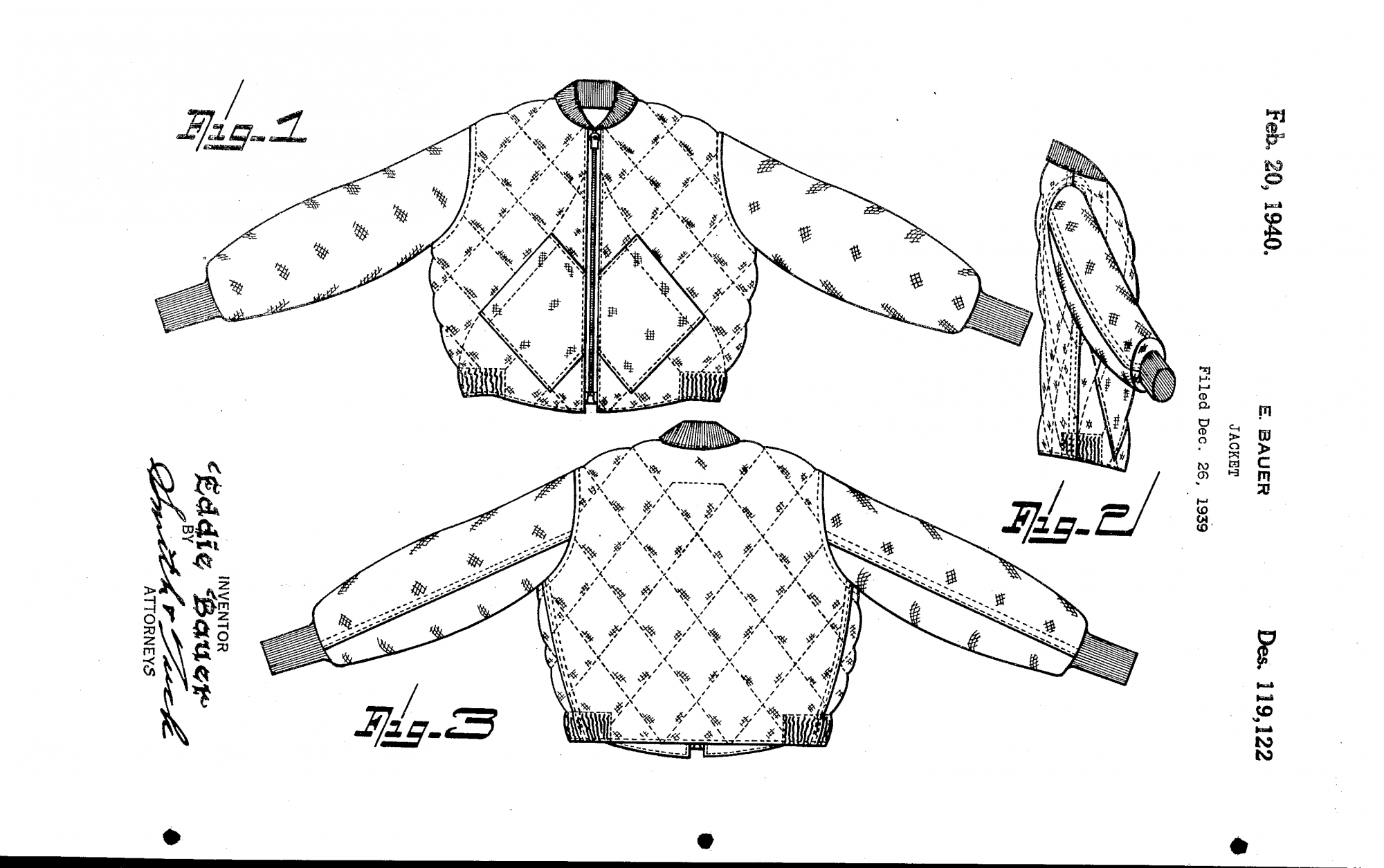
The rest, as they say, is history.
How Down Feathers Work
Down jackets work hard, all night long, to keep you toasty no matter the weather. They snuggle you and love you and will generally become your favorite piece of clothing, front- or backcountry. The science of how down feathers work is fascinating, but a little less love-dovey. Are you ready for science? Science away!
Down Feathers Provide Warmth
Down feathers are found on under the duck (almost hidden) — they're not the large, colored feathers that we love to take pictures of, but feathers you can’t really see. Down is grouped into plumes, and settles between the duck’s skin and outer feathers. The word plume is used because, when microscopically enhanced, you will see a stunning network of filaments, all of which are interconnected to create both structure and room for air within the structure. There are millions of filaments in a few ounces of down; it’s a complex network of wonderful, reactive, heat embracing stuff.
The heat of the goose’s body is trapped in this air between the filaments, which keeps said goose toasty. And you, too, as long as your body has heat (i.e., you’re not dead). This is essentially how down feathers function — trapping heat by trapping your body’s air.
Down Warmth to Weight Ratio is Superb
The warmth factor is just one half of the equation. After all, the advertisements say the “best for warmth to weight ratio around, down is blah blah blah”, right? Well, weight is pretty critical for wilderness enthusiasts, or anyone that doesn’t want to be bogged down in heavy gear.
The lasting legacy of down is that there's nothing on the planet that offers as much warmth for as little weight. An oven is just too heavy and time-consuming. A fire is theoretically lightweight, but you can’t wear it. Layers upon layers of wool and cotton and flannel may be equal in warmth, but then you’re out of luck (again) on weight.
Finally, there’s synthetic: man’s attempt to recreate what evolution has created in ducks and geese. I’m not going to get full on into synthetic replication of down here because we have a separate Guide to Synthetic Insulated Jackets . What I will say is that we have not been able to create a material that matches the warmth to weight ratio of down. We have material that is close, and highly efficient, and has other excellent properties, but nothing that is officially equal in those two aspects.
The weight of down is hard to illustrate or pinpoint for a couple reasons. First, there is no such thing as “one piece of down” to weigh. A single filament would weigh almost nothing, whereas an ounce of down feathers weighs — you guessed it — an ounce. The weight is more clearly seen in the relative light weight of jackets and other products using down. They are really, really light, especially the jackets that are built to keep specifically to stay super light.
We’ll get into the weight of down jackets (rather than down itself) in a moment.
Down Is Highly Compressible
The last aspect of down (and therefore down jackets) I have to mention at this point is just how insanely compressible the stuff is. If a company could fit that word in its nifty little slogan — “warmth to weight ratio plus compressibility” — they would, because the compressibility is as useful a feature as down’s warmth or weight. In fact, if you had an ultralight, super warm jacket that was stiff as cardboard (and packed like it), you’d pretty much be out of luck.
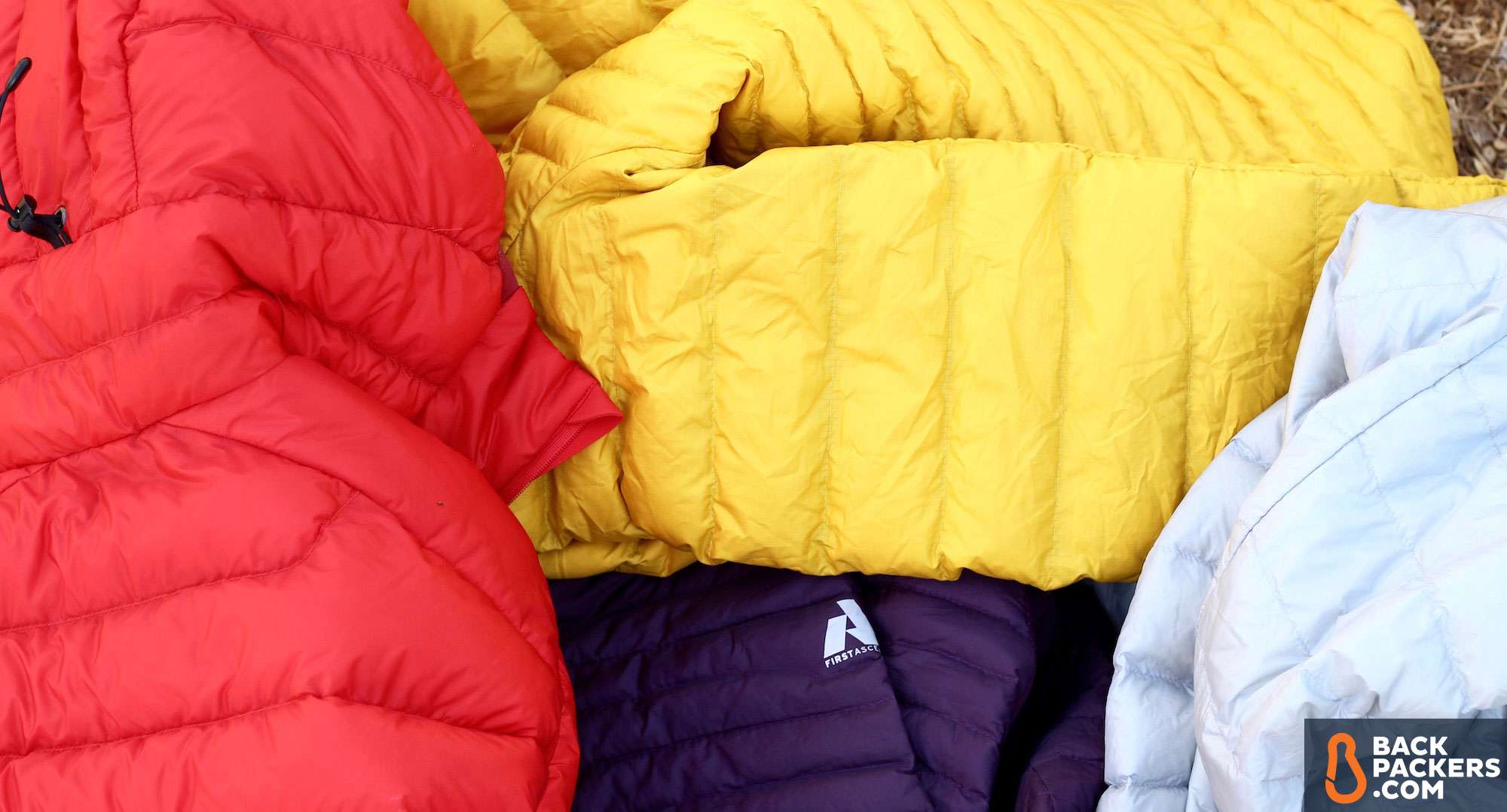
Down happens to have compressibility built right in. This means the plumes contract immediately when pressed, and expand back to their original shape when the pressing stops. The duality of this is remarkable, because the plumes don’t just contract a little; they squish to incredibly tiny versions of themselves, which makes many jackets disappear completely. (Well, not completely.) Likewise, their quick recovery enables a single jacket to spring to life the moment it’s uncompressed.
Water is Down's Kryptonite
For such an almighty substance, there’s one giant, gaping flaw with down. The flaw makes up about 71% of the earth, 65% of a human’s body, and happens to be required for all life’s survival.
Water.
Down has absolutely no protection against prolonged contact with water, which is a major issue. In fact, it’s not entirely clear if a down coat would have helped ol’ Eddie Bauer in his moment of hypothermia, because the record shows that he and his coat was soaked to the bone.
When down does get wet it loses all of its loft, meaning the chasms for air within the millions of filaments close, which also means it is no longer springy but clumpy, which also means it weighs more because it has absorbed the water.
Everything good about down gone in a flash (flood).
To counteract this, two main things have been done. The first is to ensconce down in water resistant fabrics. Wet down is one thing, but a wet down jacket is where the backpacker will truly suffer. The second is a more recent development pioneered by mad scientists — it’s called hydrophobic down.
Hydrophobic Down
Meaning “water scared” in my fullproof Ancient Greek, hydrophobic down is the new kid on the block. After material scientists could not get synthetic equivalents, they went back to down and tried to lay on some of their magical ointments.
Essentially they have treated normal down with a water repelling agent, coating every single plume with the stuff in order to make it more resistant to water. This would make that whole wet down jacket scenario much more unlikely. This straddles the line between a large scientific advancement in insulation technology and a marketing ploy.
I’m not here to suss out which it is, but a few people have. GoOutdoors and ProLiteGear have each taken a whack at comparing the regular down and hydrophobic down — both in and out of jackets — and have come up with mixed results.
Overall it seems that while hydrophobic down does fend off water better, it really shines in the recovery time. However, if you’re planning to get drenched, or live in a drench-worthy climate, down or hydrophobic down is still not your best option because you'll end up with a wet down jacket that has no loft and a great deal of clumping.
What Makes a Lightweight Down Jacket?
With the conceptual notions of down explained, it’s about time to get into down jackets themselves. I would wear geese strapped to my body if I could, but they tend to move around a lot, and they poop everywhere. By design, a down jacket used by backpackers will be a lightweight down jacket. If it's not a lightweight down jacket there's not really any point in you taking it into the backcountry. Most down jackets today are either lightweight, or ultralight, which is a covered category in and of itself.
Outdoor companies have created literally hundreds of lightweight down jackets since Bauer popularized the notion, and today we see the down puffy just about everywhere. It's not just a backcountry fixture. Those in cities, in bars, in the wilderness. Everyone wants a lightweight down jacket!

The concept of the light down jacket is that it’s an incredible midlayer for warmth, weight, and compressibility. In cold, dry climates many down jackets can serve as an outer layer, but as any manufacturer will yell at you, do not expect them to work well in the rain.
Below are important elements that go into making a lightweight down jacket.
How to Layer a Down Jacket
The “mid” in midlayer only makes sense in the context of the full layering system, which is a large topic. You probably already know it, but if you don’t, here’s a brief summary:
Multiple layers for warmth and comfort is the best way to pack for excursions. A baselayer sits on your skin, a midlayer goes over that, and an outer layer goes over that, protecting from wind, rain, snow, and unicorn horns. Layering means you’re prepared for the worst with everything on, yet very comfortable when your big guns aren't needed and the weather's nice.
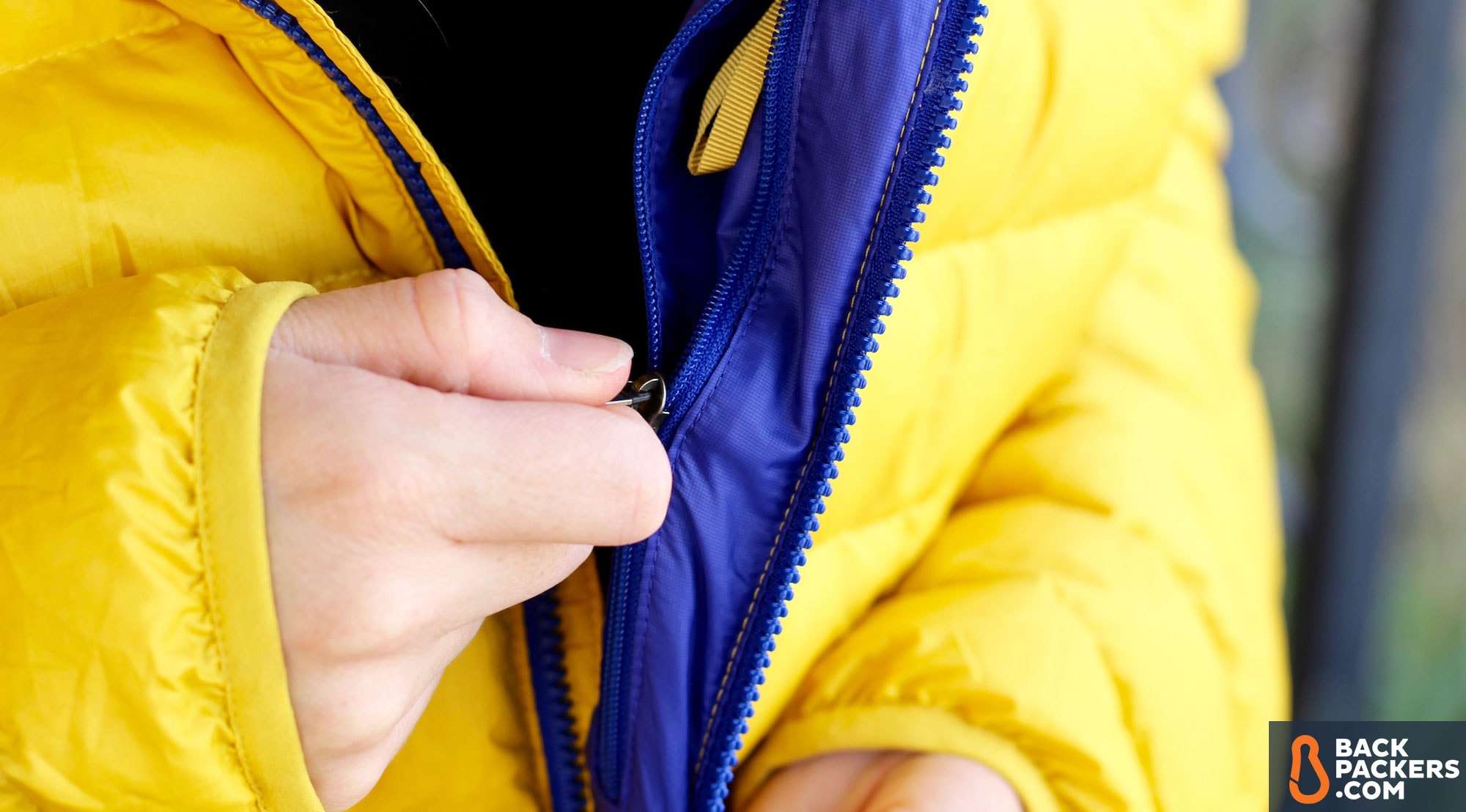
What is Down Fill Power?
The next large and often puzzling concept of the modern down jacket is its fill power. This is a fancy selling point for companies that actually matters, so take note.
You’ll see it written like this: “This down jacket has 700-fill power.” Ohh. “This one has 850-fill power.” Ahh.
These jackets, linguistically speaking, seem to have the power to fill you with down. That's not right, of course. The jargon of fill power doesn’t explain what it means. Remember how the down plumes have millions of filaments, which provide pockets for warm air to sit, which then warms the body? That entire process is called “loft.”
Fill power is literally the measurement of that loft.
To get down fill power measurement, you take an ounce of the down and see how many cubic inches it takes up. You do this in beakers to look scientific, and write it down furiously. That’s about it.
If the down takes up 600 cubic inches, it has 600-fill power; 850-fill power means it takes up 850 cubic inches; and 1200-fill power means it doesn’t exist, unless you found the rare ultra-lofted golden goose. (1000-fill power is as high as it goes).
Higher fill power costs more and is better, because it means more down can fit in a small space (compressibility), which means you will be warmer, or the jacket will be lighter, depending on how a manufacturer wants to build their jacket.
What's Better: Goose Down or Duck Down?
The above belies quite a bit about quality, but there’s one more thing to take into account. Is your jacket made with goose down, or duck down, and is one better than the other?
Better is all relative. Technically the down from both geese and ducks are the exact same thing, so neither is “better”. However, goose down is often associated with higher quality because geese down is usually loftier than duck down.
Take all of this into account when purchasing a jacket — what kind of quality do you want, expect, or care about? Down is unique in that there’s no real hype about it — the higher quality stuff is literally warmer or lighter, and the manufacturers know that.
Down Jacket Baffles Explained
If baffles baffle you, fear not. No, they are not Bavarian waffles. In the outdoor world baffles are the horizontal lines or squares you see on modern down jackets (and other coats).

Baffles matter in the following ways:
- How much down can you stuff in a baffle?
- How big are the baffles?
- What type of sewing method is used for the baffle?
You can stuff as much down as you want in your baffle (never thought I’d write that), but it correlates to weight and warmth. Warmer down jackets have massively stuffed baffles, lighter ones are less stuffed.
Baffle size is a topic of great debate. Most modern down jackets use slim baffles — about an inch wide — but there is no one right answer, and there’s more that goes into baffle size behind the scenes than I can write about here.
Sewn Through Baffles
The main distinction for baffles is how they are sewn. The most commonly used method today for lightweight down jackets is sewn through baffles — this means that at each baffle’s edge you’ll see stitching, and this stitching goes through the outer layer right to the inner lining. This is easier to do, and keeps the down in a very tight location. However, because the down can’t reach the edges of the seam, there is a loss of warmth along the stitches.
That said, sewn through baffles is the method used for your average midlayer down jacket, and still keeps users plenty warm.
Box Construction Baffles
On the other hand is box construction baffles, which are harder to create and allow for more loft and warmth. Instead of sewing the outer layer through to the liner, a box construction baffle creates a square (or rectangle) within the coat that is separately lined. It’s like a 3D cube in your jacket, which is separate from the outer material. This keeps the down in place even better, and allows for the most loft possible.
While this subject is important (for jacket nerds), the average user won’t notice too much. If you need a down jacket for arctic exploration, you’ll probably want box construction baffles. But that’s different than the lightweight down jacket we're talking about in this Guide.
Should Your Down Jacket Have a Hood?
A more important debate — should your down have a hood? The call is up to you, and we’ve highlighted down jackets that, for the most part, are available in both hooded and non-hooded versions. I like hoods because they keep my ears and neck warm, and beanies tend to itch. That’s just me.
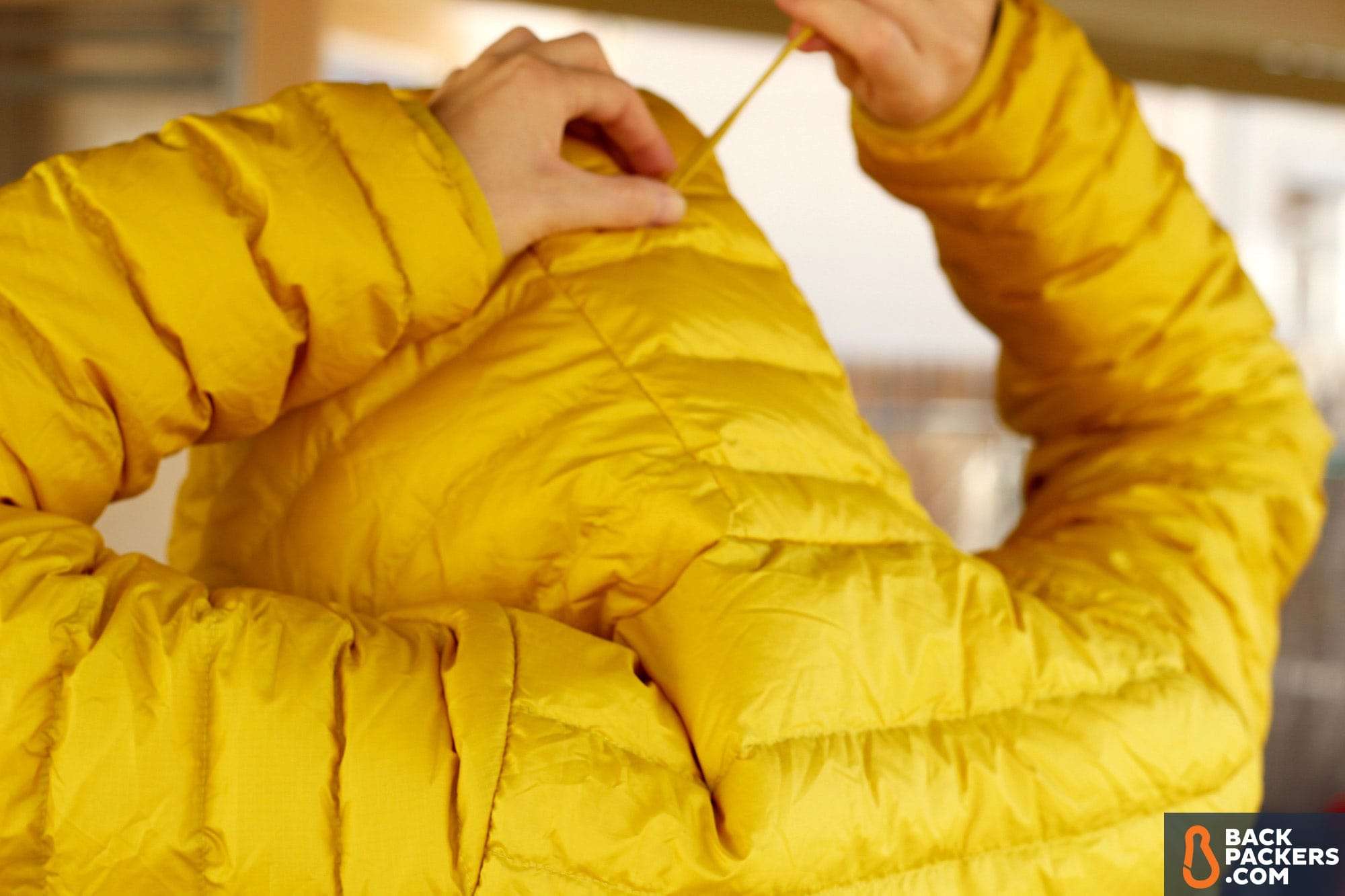
The hood debate is about heat retention, usefulness, and weight.
Heat Retention Increases With a Hood
Having a hood and using it will keep you warmer every time. However, having a hood and not using it actually lets out more warm air than a non-hooded down jacket.
Is a Hood Useful?
In the world of backpacking multi-use gear is critical. A hooded down jacket may mean you skip the beanie — but if you bring a beanie, do you really need the hood on the down jacket? Also, if you pack an outer layer, like a rain jacket, does that have a hood? (Yes, it probably does). Therefore, when it’s raining will you use both hoods, or will one of them awkwardly clog up your neck area while letting more heat out?
These are all extreme circumstances, and therefore important. However, most of us don’t venture into the extreme that often. I like hoods so I get hooded jackets — what do you like?
A Hoods Adds a Small Amount of Weight
The last factor is that a hood weighs a few more ounces. As does a beanie. As does a rain shell. If you’re an ounce counter think hard about your layering system and if the hood is worth it. In the end, it’ll usually cost about $20 more for the hooded version.
Is it a Packable Down Jacket?
The final element when it comes to the construction of a lightweight down jacket is just how packable it is. As I've said, compressibility is one of the key elements of down. But just because the down can compress doesn't mean it will be a highly packable down jacket. This is has to do with the outer material, the number and quality of zippers, the build, the size of the hood, the stitching, and more.
In short, getting a packable down jacket is essential for backpackers. This corresponds to weight as well; you want a super lightweight down jacket that is also super packable. This will mean your excellent layer of warmth fits in your pack with ease.
Can the Down Jacket Stuff Into Itself?
One good measure of this today is whether or not the lightweight down jacket stuffs into itself. Many manufacturers of high-end down jackets have specifically made a pocket, either the chest or hand-pocket, large enough to completely stuff the entire jacket inside.
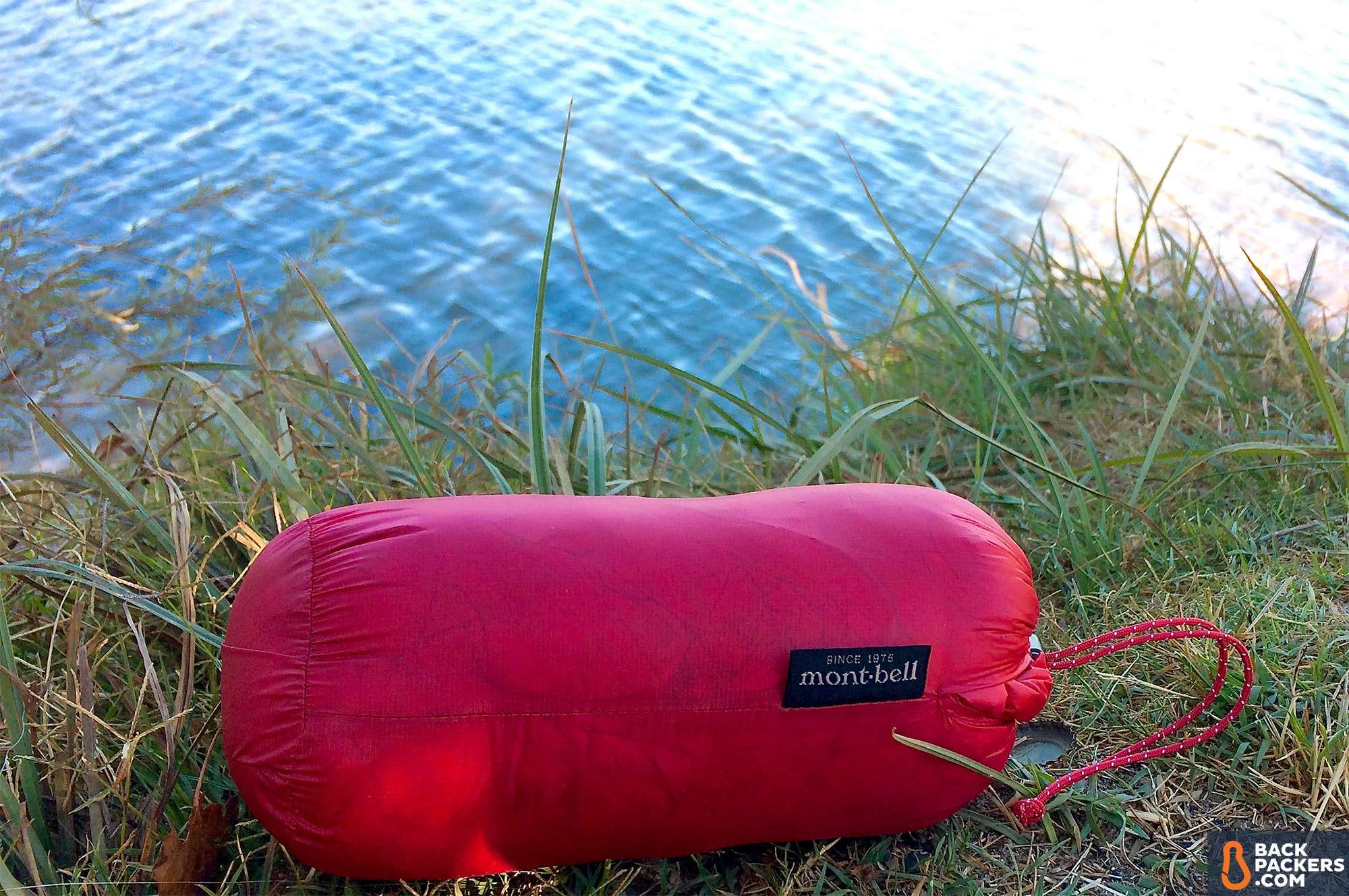
It either forms a tiny ball that can be clipped to your belt or stuffed into a small conrner of your pack, or a larger pillow-shaped ball that you can sleep on. Either way, if the jacket stuffs into itself and forms a small pocket, you know it's a packable down jacket.
You can also tell just by shoving the jacket into a corner of your backpack. How much room does it take up? If your answer is “whoa, that's tiny!” then you've got a packable down jacket.
The Outer Material of Lightweight Down Jackets
The down is just one component of lightweight down jackets. There’s also the outer material of the coat — what greets the air, traps in the down, and is present for all eyes to see. While down rocks for being all-natural, the industry does not use all-natural products for a lightweight down jacket's outer material. Natural materials would degrade too quickly and not hold in the material like you need them to.

The specifics of this outer material change from manufacturer to manufacturer, but it’s typically made with high-grade nylon. The same shiny, wonderful nylon that so many of our outdoor products are made of. You don’t have to get too hung up on specifics for the type of nylon — the outdoor industry tends to use the best stuff, and if you’re paying top dollar for a down jacket you will get a top dollar coat.
That said…
What Does Downproof Mean?
No, it’s not a typo. A downproof jacket means one that doesn’t leak down. The one thing you want to be wary of is a jacket that is constantly leaking feathers. The best nylon material and stitching is created to prevent this at all costs — if you lose the down, your lightweight down jacket won’t do jack for you.
Note that with use all down jackets leak feathers at some point. After three years it’s normal to see a little loss (still very little); after a week, not so much.
That said, never pull the down out of the jacket when you see a feather. It's tempting, I know. When you do this it widens the hole that the feather came out of, and is the quickest way to make it happen more. If you see a down feather sticking out just leave it alone.
What is Durable Water Repellant (DWR)?
The other key aspect of this outer nylon material is how it stands up against water, because we know down itself cowers in fear. Due to down's inherent flaw, it’s standard for manufacturers to put a DWR finish on all the nylon exterior of lightweight down jackets. This doesn’t make the jacket waterproof, but it helps it to be water resistant.
Yes, the modern down jacket can withstand a light drizzle for an hour or so. Not a heavy downpour, and not extended periods of drizzle, no matter how light. The best down jackets have a solid DWR coating that doesn’t fade quickly, and beads water off your coat well.
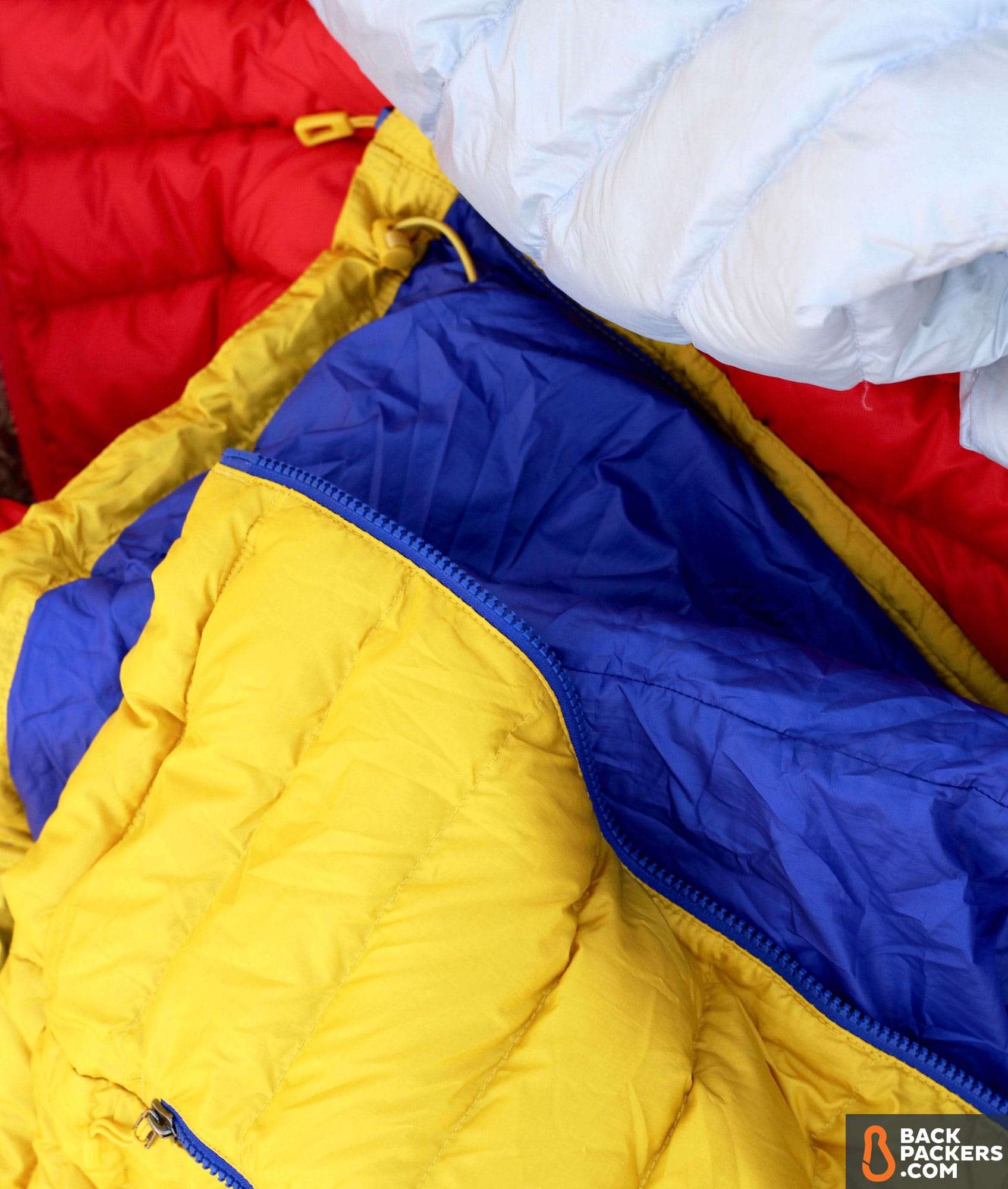
Down and Animal Rights
Before we get into the jacket construction, it’s important to talk about the animal rights movement in regard to down. Historically, geese and ducks have been plucked in horrific environments for their down, equating your comfy coat to a tortured animal. To make matters more gruesome, the down is actually a secondary byproduct of the meat that geese and ducks provide. So, while the plucking may be one problem, how ducks and geese are treated for their meat is another. This involves force feeding for fois gras and other methods.
If you search the Internet to watch any of these processes you’ll be met with a slew of disgusting videos.
This is clearly disturbing, and should not be permitted. Responsible outdoor companies have, in recent years, sourced down from reputable providers. Patagonia and others led the way; now there is a traceable down standard outlined for all manufacturers of clothing and a number of international bodies dedicated to assuring the humaneness of the process.
Part of the high cost of a down jacket is its responsible sourcing, one that we believe is critical. The jackets we recommend all use down that can be traced and meet a variety of international standards.
Backpacker Types
Our site asks this in a nice way, at the top. You don’t have to be one type — in fact, many identify as most types. But we do break down our Gear Recommendations (and Outdoor Guides) by these types in order to better aid you in your selective search for gear. This, of course, pertains to down jackets. What type of jacket do you need for each adventure you want to take?
Whereas our Outdoor Guide on backpacks shows some serious differentiation based on activity, you’ll notice a lot more overlap for our down jackets. That’s because we believe a solid down jacket will perform like stardust (a.k.a. awesomely) in many different use scenarios. That said, we we are all about highlighting the best gear in a given activity.
I’ll explain our decisions below.
Wilderness Backpacker
This persona is the bread and butter of our website, and what has made down jackets so popular. Bauer wouldn’t have had the revelation if we wasn’t in the wilderness, and we wouldn’t have the down jacket to snuggle up with.
Our selection of down jackets for the Wilderness Backpacker is a marriage of warmth and weight. You want the coat to be fairly lightweight, and because it’s down that’s going to happen. You also want it to be warm. Really warm. Frozen mornings warm. All our Down Jacket Gear Recommendations for the Wilderness Backpacker conform to these two principles, each with varying degrees of weight and warmth for your buck.
Other things to consider: pockets, stuffability, and drawcords. Our picks have some combinations of all of these.
Ultralight Backpacker
For the super weight conscious (pack wise), we highlight a slightly different range of down jackets. These focus on weight as the primary factor, but these coats still need to pack a super warm punch.
You’ll notice the outer materials on these down jackets are thinner and more prone to ripping, and this is to save weight. You’ll also notice less pockets, less zippers, and fewer extra features to keep the overall weight down. More than any other activity type, the Ultralight Backpacker needs a mid-layer that performs well, and fits within a concise system of gear.
Car Camper
We believe that if you’re shopping for a down jacket, the one you buy for the Wilderness Backpacker is plenty sufficient for car camping. Unless you get seriously picky about activity type (and have oodles of cash), one jacket will serve both scenarios incredibly well. That said, we also believe the car campers can get by with a more budget-friendly coat because their lives are not typically dependent on it.
You’ll notice our down jacket picks for Car Camper are almost the same as Wilderness Backpacker.
Day Hiker
Not to be redundant, but the same goes for the Day Hiker as the Car Camper. We’re trying to save you money here! Day hiking can definitely require a down jacket in colder regions (or during a night hike), and the Car Camper jackets still serve this function best. They pack small and light for your hike, keep you warm, and layer if it starts to rain.
Urban Hiker
In the city you need a slightly different set of perks from your down jacket. Style is one of them, and one we haven’t touched on in this guide. Down jackets used to make you look like the Michelin Man, and while that trend is definitely on the way out, our Urban Hiker down jackets steer clear of fashion.
These jackets need to work well in a bar, a cab, or the metro, and they need to blend right in to city life. Likewise, they need to warm and lightweight so you can travel with ease. Lastly, they need a bit more weather protection, as you probably won’t be layering quite so seriously as you would in the wilderness.
Choosing the Right Down Jacket for You
We've talked a lot about the different components of a down jacket, from the plume to the baffle to the water repellent-ness. We have also selected specific models of down jackets that we think are the best for their activity type, and recommend them wholeheartedly.
That said, each manufacturer has a slightly different fit. While every jacket we recommend is rock solid, try them on the in the store before you buy. Make sure it fits your waist, your arm length, and covers your noggin (if it has a hood). These are stylish concerns, but they’re also survival concerns. If a jacket doesn’t fit you properly you may not retain the heat you need to and get too cold.
A solid fit is what’s most important, so make sure to consider it when you make a purchase.


